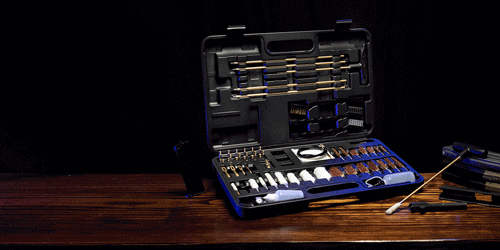How to Store Your Outdoor Gear: Essential Tips for Keeping Equipment Safe and Organized
Proper storage of outdoor gear is crucial to maintaining its longevity and performance. Whether you're a seasoned hunter or outdoor enthusiast, knowing how to store your equipment can save you time, money, and hassle. In this guide, we will share our insights on how to keep the hunting equipments safe and organized.
Clean Your Gear Before Storing
The first step in storing any outdoor equipment is to ensure it's thoroughly cleaned. Dirt, grime, moisture, and other contaminants can cause damage over time if left on your gear. Here’s how to clean and prep your items for storage:
- Camping gear: Wipe down tents, sleeping bags, and backpacks to remove dirt, sand, and debris. Ensure everything is completely dry to avoid mold and mildew growth.
- Hunting gear: After a hunting trip, clean your boots, clothing, and any other gear used in the field. Use specialized cleaning solutions for items like binoculars and scopes to keep lenses clear.
- Firearms: Thoroughly clean your firearm before storing it, using a high-quality gun cleaning kit like the one offered by Gloryfire. This will help remove dirt, residue, and moisture that could lead to rust or malfunction.

Categorize Your Gear
To optimize your gear management and ensure a more efficient expedition, consider categorizing your equipment into the following distinct groups:
- Hunting Gears: Rifles, optics, ammunition, and other specialized tools essential for the hunt like range finders/field dressing knives/animal calls etc.
- Camping Gears: Shelter, sleeping systems, cooking equipment, and other necessities for a comfortable and safe camp setup.
- Safety & Survival Gears: First aid kits, emergency shelters, fire starting tools, and other critical items for mitigating risk and responding to adverse situations.
- Backpack & Storage: Backpacks, dry bags, and other containers for organizing and transporting gear.
- Communication: Radios, satellite phones, and other devices for maintaining contact with your team and the outside world.
By compartmentalizing your gear in this manner, you'll be able to locate the necessary equipment quickly and thoroughly, streamlining your preparations and enhancing your overall hunting experience.

Storing Firearms: Use a Gun Safe for Security and Protection
Firearm storage is one of the most critical aspects of gear management, both for safety and the longevity of the gun. Storing firearms in a secure, high-quality gun safe not only protects them from unauthorized access but also shields them from environmental factors that can cause damage.
- Choose the Right Gun Safe: A gun safe, like those available from Gloryfire, provides a secure environment to store firearms. Look for safes that are fireproof, waterproof, and offer advanced locking mechanisms for added security.
- Keep It Dry: Moisture is the enemy of firearms. Consider using a dehumidifier inside your gun safe to keep the air dry and prevent rust.
- Regular Maintenance: Periodically check your firearms, even while stored, to ensure they remain clean and rust-free. Utilize a gun cleaning kit to maintain the condition of your firearms before and after storage.

Find Suitable Place to Store Your Gear
Effective gear storage is often a challenge, particularly for those with limited space. In the absence of a dedicated garage or storage area, it's essential to think outside the box and repurpose underutilized spaces. Consider the following creative storage solutions:
- Reclaim forgotten areas within your closet or laundry room, converting them into functional storage zones.
- Maximize the storage capacity of your backpack by utilizing every available pocket and compartment.
- Don't overlook the often-wasted space under your bed, which can be leveraged with bed risers or storage containers.
- Even your bookshelves can be repurposed, freeing up space by downsizing or repurposing book collections to make room for your essential gear.

Label Your Gear
The art of gear storage management involves a crucial step: labeling. Labeling everything is key to efficient storage. Use labels to categorize your gear into hunting gears, camping gears, safety and survival gears and so on. To take it to the next level, use labels to categorize your gear according to your own categories, and activities like hunting or camping. You can even use color-coding your stuff sacks or dry bags, use labels or color-code them. Green for hunting gear, blue for camping gear, and so on. This will help you never find yourself halfway without a paddle again, and you'll never be stuck without the necessary gear.

Use Durable Storage Containers for Outdoor Gear
Keeping your camping and hunting equipment organized ensures that everything is easy to find and prevents damage during off-seasons. Use durable storage containers to keep your gear in top shape.
- Waterproof Bins: For items that may be exposed to moisture, such as camping gear or hiking boots, use waterproof bins with airtight seals to protect them from water and humidity. Label the bins for easy access and organization.
- Soft Cases for Gear: Soft cases with padding can help protect fragile items like optics, scopes, and electronics. Make sure these cases are stored in a dry, cool area to prevent exposure to extreme temperatures.
Hang or Roll Your Sleeping Bags and Tents
Improperly storing sleeping bags and tents can damage their insulation or fabric. Instead of stuffing them back into their compression sacks after each trip, take the following steps:
- Sleeping Bags: Store your sleeping bags loosely in a large cotton or mesh storage sack to preserve the insulation. Avoid hanging them by the straps, as this could weaken the material over time.
- Tents: Let your tent air out after every trip to ensure it’s completely dry before storing it. Rolling it up neatly will help prevent creases and damage to the tent’s waterproof coating.

Keep Backpacks and Tactical Gear Organized
Tactical backpacks should be cleaned and stored properly to maintain their durability and functionality.
- Empty and Clean: After every trip, empty your backpack and wipe it down to remove dirt or debris. Pay special attention to zippers and buckles to prevent them from sticking or corroding.
- Store in a Dry Area: Backpacks and other tactical gear should be stored in a dry, ventilated area to prevent mold or mildew. If your backpack features MOLLE webbing, ensure no small items are left attached that could cause unnecessary wear on the fabric.
Store Hunting Apparel Properly
Your hunting clothes and gear are vital parts of your outdoor kit. Proper storage can keep them in good condition and ready for the next season.
- Wash Before Storing: Clean hunting clothing and boots before storing them. Use scent-free detergents to wash hunting apparel to avoid unwanted scents being absorbed by the fabric.
- Use Airtight Bags: Store your hunting gear in airtight containers or bags to protect them from moisture, pests, and unwanted odors. Consider hanging clothes to keep them wrinkle-free and ready for use.
Maintenance of Specialized Gear
If you have specialized equipment such as binoculars, scopes, or GPS devices, proper care and storage are essential for their longevity.
- Protect Lenses: For optics, such as binoculars or rifle scopes, always use lens caps when not in use. Store them in padded cases to protect from impact damage and dust.
- Remove Batteries: For electronic gear like GPS devices, radios, or rangefinders, remove the batteries before storage to prevent corrosion.

Seasonal Gear Rotation
Depending on the time of year, you may use different types of outdoor gear. Rotating your storage ensures easy access to the items you’ll need next.
- Seasonal Sorting: Store off-season gear in the back of your storage area, and keep the current season’s gear upfront. This makes it easier to access what you need when you need it.
- Inspect and Update Gear: Before putting away seasonal gear, inspect it for damage, wear, or any parts that may need replacing. This ensures you’re ready to go for the next season without needing last-minute repairs or replacements.
Guarding Against Gear Degradation
Moisture is a silent saboteur, capable of wreaking havoc on your camping gear. It can irreparably damage electronic devices like flashlights, foster the growth of mold and mildew on fabrics, and even cause the waterproof coating on your tent to break down, leaving it sticky and compromised. To prevent this, it's essential to ensure that every item is 100% dry before storing it away. For an added layer of protection, consider incorporating desiccants, such as silica packets, into your storage containers. These simple packets can help absorb any residual moisture, safeguarding your gear against the corrosive effects of humidity.

We hope these tips have provided you with a solid foundation for storing and managing your gear. As you put these strategies into practice, you'll become more confident in your ability to keep your equipment organized and easily accessible. Remember, effective gear management is a skill that develops with time and experience. With continued practice, you'll refine your approach and develop a system that works best for you, allowing you to focus on what matters most - enjoying the thrill of the hunt and the great outdoors.





